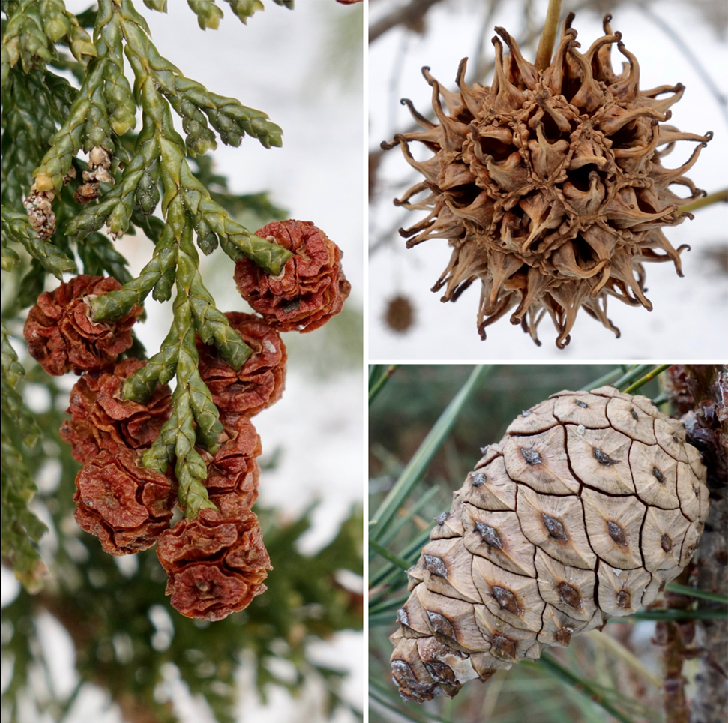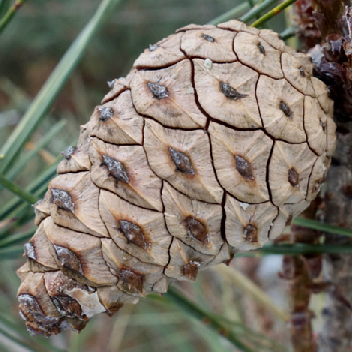Yesterday morning was gray and cold, with this week’s snow still on the ground—in other words, perfect for a walk in the Arnold Arboretum. So, off I went to tour the Conifer Collection, then turned the corner to the hornbeams (Carpinus) and hop-hornbeams (Ostrya) and angled through the majestic North American oaks to my final destination, the sweet gums (Liquidambar) on Bussey Hill. What really came to the fore during my amble was the magnificent spectrum of browns on offer. The browns of winter are subtle, but the rewards for taking them in are well worth a brisk walk. Brown is everywhere: in the cones of conifers, the aging fruits and infructescences of flowering trees, the clouds of dormant buds on every shrub and tree, and of course, in the endless textures and patterns of bark.
Below left, the Sawara false cypress (サワラ) tree (Chamaecyparis pisifera, 13040*A) had a magnificent set of small cones breaking open to release their winged seeds to a breeze. Bottom right, the Japanese (赤松) or Korean (무나소) red pine (Pinus densiflora, 1724-77*A) with cones just starting to split to release their winged seeds. And finally (upper right, below), the American sweetgum (Liquidambar styraciflua, 1248-79*A) with its mesmerizing infructescences dangling by the hundreds from each tree—mostly finished sending its winged seeds on their journeys.

Why winged seeds? Just a matter of floating in the air a bit longer to get some distance from the mother tree (after all, that plot of earth is already occupied). If you visit these trees, shake the cones or infructescences, let the seeds fall into your palm, and give them a toss in the air. Now, you’ve done your part in the great cycle of life.
